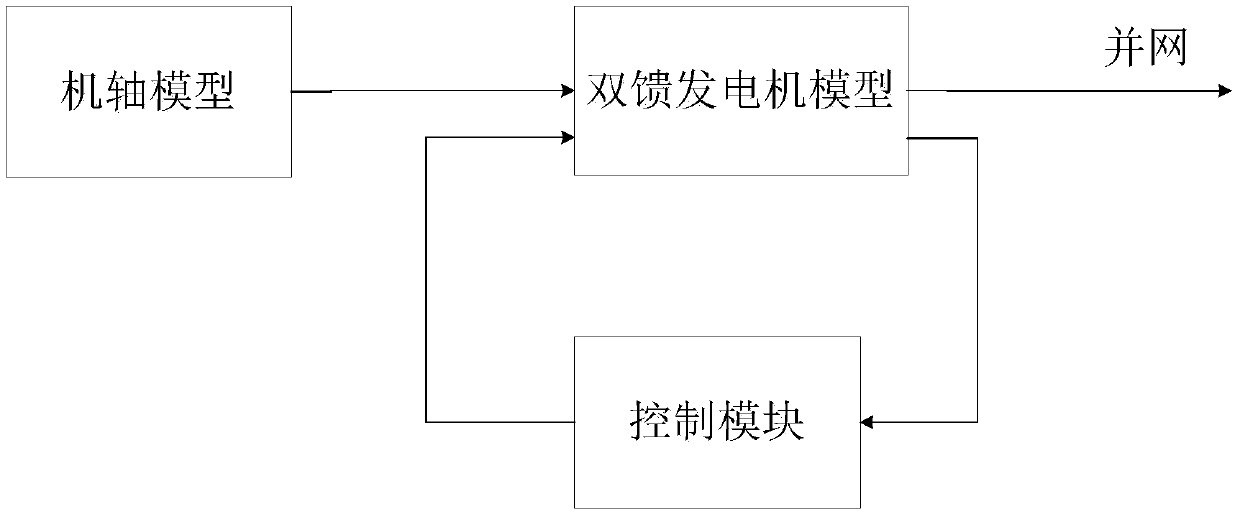Modeling and Simulation Method Combining Model Reference Adaptive Control and Reduced-Order Model of DFIG
A technology of adaptive control and model reference, applied in design optimization/simulation, CAD numerical modeling, sustainable architecture, etc., can solve problems such as system complexity increase, dimensional disaster, output instability, etc.
- Summary
- Abstract
- Description
- Claims
- Application Information
AI Technical Summary
Problems solved by technology
Method used
Image
Examples
Embodiment
[0090] Such as Figure 8 As shown, this embodiment discloses a modeling and simulation method combining model reference adaptive control with a reduced-order model of a doubly-fed fan.
[0091] figure 1 It is a schematic diagram of the overall structure of the DFIG model. The DFIG model includes: the shaft model, the DFIG model, and the control module.
[0092] The specific details of the crankshaft model are as follows figure 2 Display, including fan power model, pitch angle control model, fan drive shaft model.
[0093] The fan power model is used to calculate the wind energy absorbed by the wind turbine, according to the formula:
[0094]
[0095] The mechanical power absorbed by the wind turbine can be obtained, where ρ is the air density, R is the radius of the wind rotor, v is the wind speed, and C p is the wind energy utilization coefficient, β is the pitch angle, λ is the blade tip speed ratio, and the wind energy utilization coefficient can be described as:
...
PUM
 Login to View More
Login to View More Abstract
Description
Claims
Application Information
 Login to View More
Login to View More - R&D
- Intellectual Property
- Life Sciences
- Materials
- Tech Scout
- Unparalleled Data Quality
- Higher Quality Content
- 60% Fewer Hallucinations
Browse by: Latest US Patents, China's latest patents, Technical Efficacy Thesaurus, Application Domain, Technology Topic, Popular Technical Reports.
© 2025 PatSnap. All rights reserved.Legal|Privacy policy|Modern Slavery Act Transparency Statement|Sitemap|About US| Contact US: help@patsnap.com



